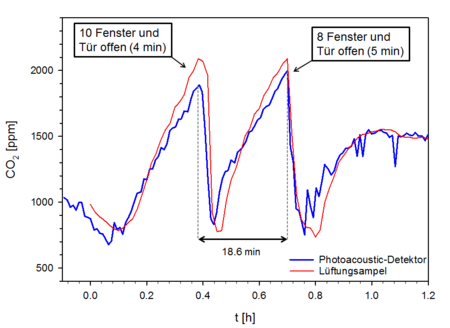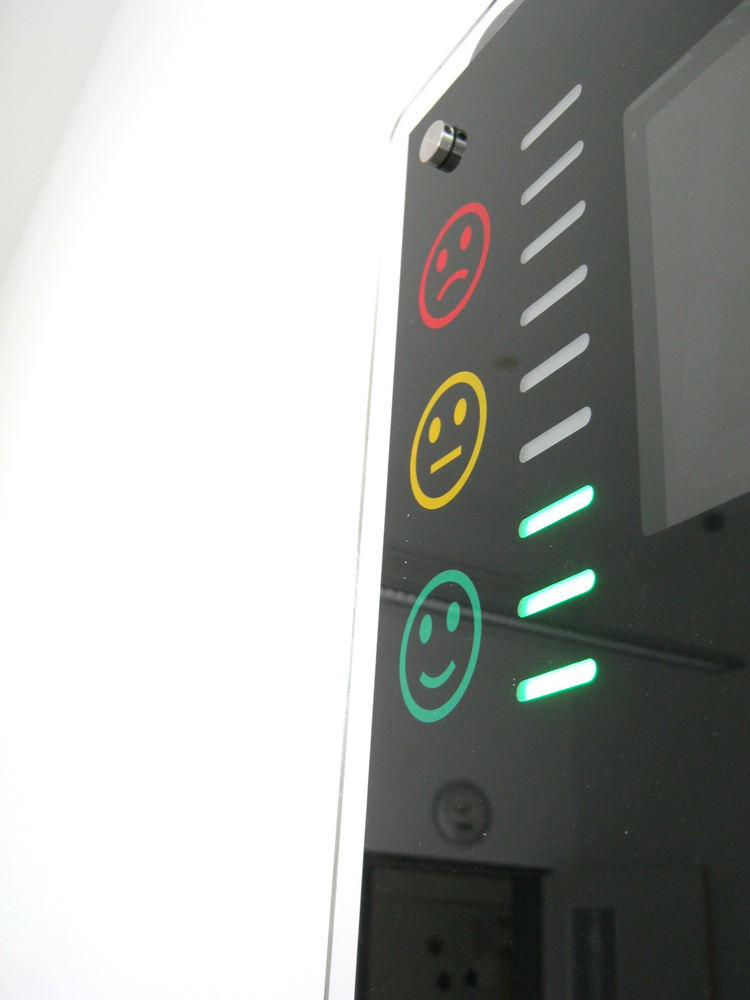Classrooms generally have a high occupancy density with long periods of use. It is often neglected to refresh the room air through ventilation, especially in the cold season or when the weather outside is poor. The concentration of carbon dioxide (CO2), as a human metabolic product, is a good indicator of air quality and can therefore quickly exceed the permissible guide value in classrooms. Air that is not "fresh" not only makes room users uncomfortable, but also has a decisive impact on people's ability to concentrate. The introduction of a controlled ventilation concept is absolutely essential to avoid exposing students to hygienically questionable air quality.
Ventilation concepts in classrooms
Carbon dioxide (CO2) can serve as a measure of the intensity of use of an indoor space and consequently as an indicator of the total amount of organic emissions released by human metabolism. The concentration of carbon dioxide is therefore also used as a key parameter for assessing the ventilation situation. CO2 generally rises rapidly when many people are present in a relatively small room and ventilation is insufficient. This increase in concentration is directly influenced by the number of people (occupancy density), their activity (sitting, exercising), the length of time the room has been used and the construction of the building. In uninsulated or poorly insulated buildings, the air is already exchanged to a certain extent through natural ventilation. In energy efficient buildings, the ventilation rate (air change rate) is correspondingly low, and the CO2 concentration can already increase even when only a small number of people are using the building.
Classrooms as permanent recreation rooms
Classrooms are regularly used by many people at the same time over a long period of time. Children, teenagers and young adults belong to a population group that is particularly sensitive to environmental influences. Studies have shown that attention and the ability to concentrate are directly influenced by the air quality and therefore by the CO2 concentration. In addition to other aspects, such as emissions from building products and furniture, the entry of (fine) dust and microbial contamination, CO2 pollution is one of the main air pollutants in schools.
Necessary ventilation concepts and responsibility regulations
As studies have shown, room ventilation is often neglected and is particularly dependent on the prevailing outdoor air temperatures. According to the recommendation of the Indoor Air Hygiene Commission of the German Environment Agency, multiple air changes per hour are recommended for an average class size (approx. 25-30 m³/h per person), but cannot be achieved by natural ventilation alone. Therefore, specific ventilation concepts need to be implemented and communicated as clear instructions to the teaching staff and students.
A short-term ventilation (5-10 minutes) at regular intervals are required during every break and, if necessary, every half hour during lessons. Clear regulations regarding responsibilities must be made, especially during the cold season. If a hygienically satisfactory air quality cannot be achieved by manual ventilation, it may be necessary to install mechanical ventilation systems. To maintain the hygienic requirements for indoor air quality, regular maintenance of such systems is essential. DIN EN 16798-3:2017-11 applies to schools with technical ventilation systems. The standard provides recommendations for the planning and design of ventilation systems in non-residential buildings, as well as ventilation rates per person and per m² (floor area) based on a four-stage indoor air classification.
So-called CO2 traffic lights (Fig. 2) can also be installed in classrooms as a visual aid, which indicate the need for ventilation in green, yellow and red when certain CO2 concentrations are exceeded. Fig. 1 shows the CO2 concentration curve during a lecture, measured using photoacoustic spectroscopy (PAS) and a CO2 traffic light. The typical sawtooth shape of the curve is caused by brief ventilation during breaks and when a concentration of 2000 ppm CO2 is exceeded.
Literature
- Ad hoc AG, 2008. Gesundheitliche Bewertung von Kohlendioxid in der Innenraumluft. Bundesgesundheitsblatt 51, 1358-1369.
- Innenraumlufthygiene-Kommission des Umweltbundesamtes, 2008. Leitfaden für die Innenraumhygiene in Schulgebäuden. Umweltbundesamt, Berlin.
- Gao, J., Wargocki, P., Wang, Y., 2014. Ventilation system type, classroom environmental quality and pupils‘ perceptions and symptoms. Building and Environment 75, 46-57.


